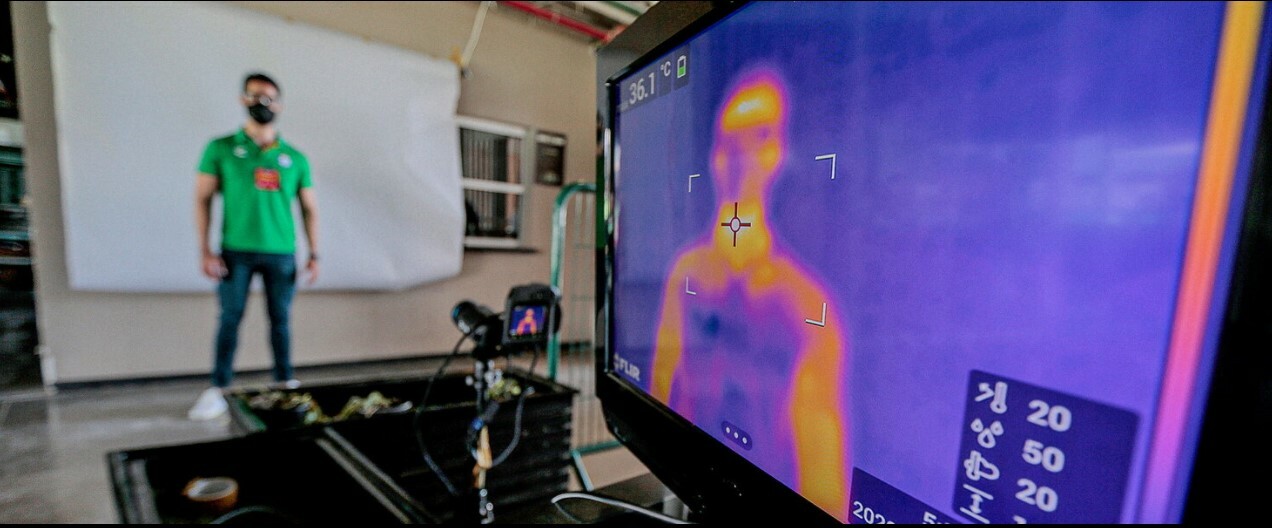The NBA recently opted to form a “bubble” concept in Disney’s facilities. Although it has been a relative success, it has also been a USD 200 million temporary solution. This begs the question: How long can football stadiums (and football) survive like this without spectators present?
History tells us that stadiums, venues and football recover from disasters, so what can stadiums do to speed up the process? This is quite possibly going to be the catalyst for AI to be integrated on mass level to football stadiums around the world.
Artificial Intelligence in the aftermath of Covid-19
The role of AI in getting fans and spectators back is huge, through capabilities such as:
- Social distance monitoring
- Crowd scanning/metrics
- Facial recognition
- Fever detection
- Track & trace
- Providing behavioural analytics
AI solutions are already being rolled out and are now utilised by national leagues, professional football clubs and governing bodies. AI is providing cost-effective security solutions in the aftermath of COVID-19, football clubs and stadiums alike are utilising their current surveillance cameras and simply implementing AI surveillance software.
This is now creating a more collaborative effort from the operations team in stadiums, rather than purely security. AI surveillance software when implemented into the surveillance cameras can be accessed by designated users on any device and on any browser platform, making stadium operations more fluid, streamlined and prepared.
Crowd metrics and track & trace
Equipping stadiums with AI-powered surveillance tools can detect crowd metrics such as “people counting” and group statistics. This ensures stadium personnel can monitor social distancing with precision, accuracy and immediately. Alerts can be set up throughout parts of the stadium to alert senior staff members when overcrowding can appear with real-time videos, analytics and photos to their hand-held device, such as a smartphone. Thermal cameras have been implemented throughout facilities including stadiums and are helping assist to spot people with elevated temperatures.
With several games seen as “super-spreading events” last season, it is imperative stadiums now have the ability to track and trace. AI is now powering stadiums with the ability to track individuals in real-time and after the event has concluded through innovative practices like “searchveillance”.
Pandemic monitoring by facial recognition
Through facial recognition, staff members will be able to locate individuals through simply uploading a photo. It has never been easier to find a person of interest. With masks becoming an everyday part of society, facial recognition has come under scrutiny regarding the accuracy when a mask is worn. AI surveillance software organisations are still maintaining a 96% accuracy with individuals wearing masks and can set up alerts for any individuals not wearing a mask.
Another important aspect of facial recognition is finding persons of interest quickly through pre-mentioned practice of “searchveillance”. The future is here, where designated staff can track a person from when they enter the stadium by simply uploading their photograph. An example of how this can assist stadium personnel is to help relocate lost children inside the stadium with their guardians/parents when they are separated. Another attribute would be any individuals banned from entering the stadium would trigger alerts once they appear under surveillance, a fantastic collaborative tool to use with Law Enforcement.
Return on investment
With security solutions, one of the biggest issues with any security investment is a lack of a ROI. This is where AI security is breaking the mould. The ability to provide business analytics, consumer/fan behaviours, traffic patterns, etc, allows other departments within the organisation to gain vital information that can assist with strategies and practices.
Stadium operations will never be the same in a post-COVID world, so why will its practices stay the same? AI in stadiums is no longer the future: it’s already a reality in 2020.


